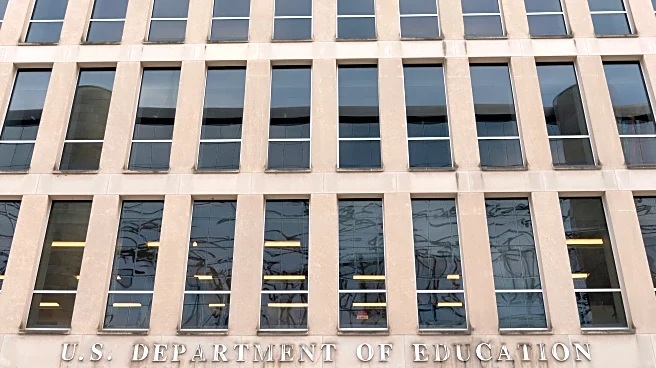What's Happening?
The Trump administration has reached an agreement to cancel student debt under programs it had previously blocked, reopening a path to student loan forgiveness for millions of borrowers. This decision
follows a lawsuit filed by the American Federation of Teachers against Trump officials, accusing them of obstructing federal student loan holders from accessing programs mandated in their original borrowing terms. The agreement will allow the processing of student loan forgiveness for eligible borrowers in two income-driven repayment plans, the Income-Contingent Repayment plan and the Pay as You Earn plan, as long as these programs remain in effect. The Trump administration plans to phase out these plans by July 1, 2028.
Why It's Important?
This development is significant as it impacts millions of borrowers who rely on income-driven repayment plans for affordable payments and debt relief. The agreement marks a victory for borrowers and highlights the ongoing legal and policy challenges surrounding student loan forgiveness. The decision could influence public perception of the Trump administration's handling of education policies and its commitment to following Congressionally mandated programs. It also underscores the broader debate over student debt relief and the role of federal government in supporting borrowers.
What's Next?
The Trump administration's decision to phase out the Income-Contingent Repayment and Pay as You Earn plans by 2028 suggests potential changes in the landscape of student loan repayment options. Borrowers and advocacy groups may continue to push for more comprehensive debt relief measures. The Education Department's response to this agreement and its future actions regarding student loan policies will be closely monitored by stakeholders.
Beyond the Headlines
The legal challenges faced by the Trump administration in this context reflect broader tensions between federal policies and judicial oversight. The outcome of this agreement may set precedents for how similar cases are handled in the future, influencing the balance of power between executive actions and legal constraints.












